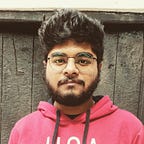Women of the Constituent Assembly
If we read the Preamble to the Constitution of India, we will come across the date ‘26th day of November, 1949.’ The anniversary of this day each year is celebrated as Constitution Day or Law Day. It was a historic day about two years after the formal transfer of power took place from the Crown to the country. Political leaders and public intellectuals of the infant country had taken it upon themselves to formulate and draft a single Constitution for the length and breadth of the expansive, heterogenous landscape reductively called India. On 26 November, 1949, the people of that landscape adopted, enacted and gave to themselves that Constitution. The day is now celebrated as Constitution Day.
Fascinating is the first word which comes to mind when thinking about the stormy days of the Constituent Assembly. The debates (now available in twelve voluminous books) which took place in that Assembly still remain some of the most scholarly and erudite of their kind in independent India’s chequered political history. The Constituent Assembly (CA) was a cross-section of India’s political spectrum. Many illustrious personalities adorned the CA — ranging from TT Krishnamachari, who later went on to become India’s Finance Minister, to Constitutional advisor Sir B.N. Rau, who was also instrumental in the drafting of the Constitution of Myanmar. It goes without saying that the CA was one of the finer legislative endeavours in India’s political history.
A lot has been discussed about the illustrious men who adorned the CA — from Nehru to Ambedkar to Rajaji. However, little has traditionally been discussed about the 15 powerful women who helped shape the Constitution of India. Of them, the likes of Sarojini Naidu, Vijayalakshmi Pandit and Sucheta Kripalani have managed to sneak into public discourse. I try to shed light on a few of the rest.
Rajkumari Amrit Kaur
Rajkumari Amrit Kaur was a member of the royal house of Kapurthala, an erstwhile princely state. She was elected to the CA from the United Provinces. Kaur, the Gandhian, actively participated in the Dandi March. Kaur, the suffragist, co-founded the All India Women’s Conference in 1927. She was a vocal critic of the British Raj and was even charged with sedition. A supporter of the Uniform Civil Code, she went on to become independent India’s first health minister and became instrumental in the setting up of the All India Institute of Medical Sciences (AIIMS).
Ammu Swaminathan
Ammu Swaminathan hailed from the erstwhile Madras Presidency. She became a follower of Mahatma Gandhi under the influence of her husband. Despite being formally uneducated, she developed strong and enviable English language skills — something very rare among women those days. She was elected to the CA primarily because of her language skill and her ability to engage with politics of the day from a woman’s perspective. She had two daughters who became illustrious figures in their own right — one was Captain Lakshmi Swaminathan of the Indian National Army, who even contested presidential elections in India against Dr. APJ Abdul Kalam, and the other was the danseuse Mrinalini Sarabhai.
Hansa Mehta
Hansa Mehta belonged to the erstwhile princely state of Baroda. She was a proactive social activist and feminist. She participated in Gandhian mass movements and was also elected to the Bombay Legislative Council. She presided over the All India Women’s Conference in 1945–46. In 1948, she became the Indian representative to the UN Human Rights Commission, and was responsible for changing ‘all men are created equal’ to ‘all human beings are created equal’ in the Universal Declaration of Human Rights. She was also an ardent litterateur who translated English stories and adapted Shakespeare’s plays.
Leela Roy
Leela Roy was born in Sylhet in modern-day Bangladesh. She was a socialist and feminist activist and was instrumental in the formation of the Dhaka Women’s Committee. She came under the influence of Subhas Chandra Bose and helped raise funds in his relief efforts after the floods in Bengal in 1921. In 1938, when Bose was the Congress President at the Haripura session, he nominated Roy to the National Planning Committee of the Congress. She was also proactive during the Noakhali riots and helped to run relief centres. Roy later joined the party formed as a merger of the Forward Bloc and the Praja Socialist Party, but quit soon after. The famous Leela Roy Sarani near Gariahat is named after her.
Dakshyani Velayudhan
Dakshyani Velayudhan belonged from Ernakulam district in modern Kerala. She was a Dalit woman and a staunch Gandhian in her formative years of activism and even married her husband in Sevagram with Gandhiji and his wife Kasturba standing witness. She was the first and only Dalit woman to be elected to the CA. For many issues during the CA debates, she found herself agreeing with Dr. Ambedkar’s views, especially on the position of Scheduled Castes.
Durgabai Deshmukh
Durgabai Deshmukh was a social activist and politician from the then Madras Presidency. The founder of the Andhra Women’s Conference, Deshmukh was vocal against imposition of both English education and worked toward Hindi education for girls. However, later she even raised concern about the imposition of Hindi on South Indian states. She was a proactive Congress volunteer and participated in Gandhian mass movements. She was married to C.D. Deshmukh, the first Indian governor of the Reserve Bank of India. Apart from the Constituent Assembly where she raised her voice for social welfare, she was also later elected to the Parliament. She was awarded the Padma Vibhushan by the Govt. of India in 1975.
